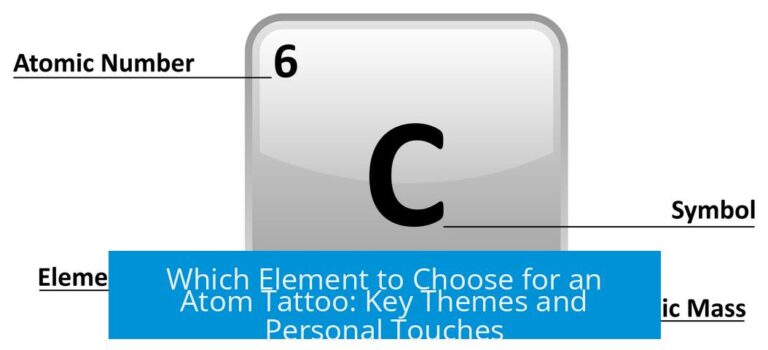How to Get Proper Fischer Projections
To get proper Fischer projections, position the longest carbon chain vertically with the most oxidized carbon at the top. Place alkyl groups at the top and bottom, and orient horizontal bonds toward the viewer while vertical bonds point away. Retain stereochemistry through strict rotation rules, and use Fischer projections mainly for carbohydrates.
Understanding Fischer Projections

A Fischer projection is a two-dimensional drawing representing three-dimensional chiral molecules. It simplifies complex stereochemistry by showing the four groups attached to a chiral carbon in a cross, with the chiral carbon at the intersection.
| Element | Representation |
|---|---|
| Horizontal bonds | Directed toward the viewer (wedge) |
| Vertical bonds | Directed away from the viewer (dash) |
The horizontal lines come out of the plane of the paper, while vertical lines go behind the plane. This convention is crucial to correctly represent stereochemistry, especially in sugars.
Orientation of Carbon Groups in Fischer Projections
Positioning of Alkyl Groups
Alkyl groups such as methyl or ethyl groups are commonly positioned at the top or bottom of the Fischer projection’s vertical axis. This creates a standard orientation that aids interpretation and comparison between molecules.
Vertical Placement of Carbon Chains

The longest carbon chain runs vertically. This chain includes the chiral centers and sets the framework for the molecule’s structure. The vertical orientation helps clarify which carbons are linked and their relative positions.
Rules for Top and Bottom Placement in Carbon Chains
The placement of the carbon chain’s ends depends on specific rules, particularly important in carbohydrates. Usually, the carbon with the highest oxidation state—often the aldehyde or carboxyl carbon—is drawn at the top. The rest of the carbon chain descends vertically.
Such organization allows clear depiction of oxidation states and how substituents attach to each carbon.
Core Principles of Fischer Projections
- Four bonds to the chiral carbon form a cross
- Vertical lines represent bonds going into the page
- Horizontal lines represent bonds coming out of the page
- The intersection point is the chiral carbon
These principles ensure that stereochemical relationships are retained correctly in two-dimensional drawings.
Steps to Draw Proper Fischer Projections

- Identify chiral centers. Locate all carbon atoms bonded to four distinct groups.
- Determine stereochemistry. Assign R or S configuration to the chiral centers before drawing the projection.
- Draw the flat molecule. Position the longest chain vertically with the most oxidized carbon at the top.
- Assign horizontal and vertical bond positions. Place substituents so horizontal bonds point forward, vertical bonds backward.
This workflow ensures accurate and standardized Fischer projections, facilitating communication of stereochemistry.
Converting Between Representations
Perspective to Fischer Projection
Begin by drawing the 3D structure in perspective. Then translate the spatial positions of substituents to horizontal and vertical lines, positioning the longest carbon chain vertically.
Fischer to Bond-Line Structure
When converting a Fischer projection to a bond-line structure, assign wedges for horizontal bonds and dashed lines for vertical ones. Visualizing the molecule as a “caterpillar” helps in determining atom orientation and stereochemistry.
Rotation and Redrawing Rules
- Rotation by 180° of the entire Fischer projection retains stereochemistry and the absolute configuration.
- Rotation by 90° changes the stereochemical configuration and produces a different isomer. It is not allowed.
Redrawing Fischer projections must preserve absolute configurations to correctly represent the same molecule.
Limitations and Usage Considerations
Although Fischer projections are widely used for carbohydrates, the IUPAC discourages their use for other molecules due to potential misinterpretations and distortion of stereochemical information.
The distinction is important: in sugars, Fischer projections clearly indicate the stereochemistry of multiple chiral centers along a chain. For other molecule classes, alternative representations may convey the three-dimensional arrangements more reliably.
Uncertainty in Group Placement
In some cases, as with substituents like methyl or ethyl groups on carbohydrates, uncertainty arises about which group is placed at the top or bottom. This depends on the molecule’s specific oxidation states, substituent priority, or conventions established in carbohydrate chemistry.
Consultation with carbohydrate chemists or reference to authoritative carbohydrate stereochemical literature provides clarity in such scenarios.
Summary of Key Considerations for Proper Fischer Projections
- The longest carbon chain is vertical; the most oxidized carbon at the top.
- Horizontal bonds point toward the viewer (wedges), vertical bonds point away (dashes).
- Alkyl groups like methyl are typically placed at the top or bottom vertical positions.
- Chiral centers appear at intersections of vertical and horizontal lines forming a cross.
- Rotation allowed only by 180° keeps stereochemistry intact; 90° rotation alters configuration.
- Fischer projections best represent carbohydrates; other uses are discouraged by IUPAC.
- Conversion between Fischer and 3D or bond-line structures requires careful bond orientation understanding.
- Consult specialized literature when ambiguity in group placement arises.
How to Get Proper Fischer Projections: Mastering the 2D Art of 3D Molecules
The short answer to how to get proper Fischer projections is this: Position the main carbon chain vertically, place alkyl groups like methyl at the top and bottom, orient the horizontal bonds toward the viewer, vertical bonds away, and never rotate your drawing 90 degrees—only 180 degrees allowed. Stick to this, and you’re set to accurately depict stereochemistry like a pro.
That’s the quick nutshell solution, but understanding why and how to execute it properly is where the real skill—and a little bit of fun—comes into play. Let’s dive deep, but keep it light.
Start with the Basics: What Is a Fischer Projection?
A Fischer projection reduces a three-dimensional chiral molecule into a two-dimensional cross (think: plus sign) where the chiral carbon sits dead center. The four bonds extend in the directions: two horizontal, two vertical. Here’s the twist—the horizontal bonds point toward you, like they’re leaning in for a secret handshake.
The vertical ones, however, retreat away from you, into molecular shadow land. This rule flips the usual perspective of wedge (solid) and dash (dotted) bonds seen in 3D drawings.
Don’t just take my word—this arrangement is what gives Fischer projections their power and quirks, especially when sketching carbohydrates.
Vertical Carbon Chain—The Backbone of Your Projection
Think of the carbon chain as a tightrope walker: it must be drawn vertically to maintain proper orientation.
Typically, this means the longest carbon chain in your molecule sits as the vertical line in the cross. Any alkyl groups—like methyl groups—generally occupy the top and bottom positions.
For example, in sugars, the carbon with the highest oxidation state often finds itself at the top, while the rest trailing down in order of their oxidation states.
Horizontal Bonds—The Molecular Puppeteers
Horizontal lines hold something special: they represent groups that pop out of the page at you. These could be hydroxyls (OH), hydrogens (H), amino groups (NH2), or alkyl substituents.
This forward directionality means when visualizing, you’re essentially looking down the axis of the molecule, with these substituents reaching toward you.
Rules for Rotation—Why 90° Is Your Enemy
Here’s a hot tip: You can only safely rotate a Fischer projection by 180°, not 90°. Why? Because a 90° spin completely messes with the stereochemistry—it inverts every chiral center, and that’s like calling a friend by the wrong name repeatedly.
Rotate 180°, and your molecule keeps its identity intact. Rotate 90°, and you’re drawing something else entirely.
Placement of Methyl vs. Ethyl Groups—A Carbohydrate Chemist’s Puzzle
One of the trickier debates in Fischer projections involves deciding which alkyl group sits at the top—especially in carbohydrates.
Ask yourself: methyl or ethyl on top? There’s no universal consensus. Often, the choice hinges on the molecule’s oxidation states and the convention within a particular chemistry community.
Pro tip: Refer to IUPAC guidelines—they discourage Fischer projections outside carbohydrates because of these ambiguities. Yet, within sugars, these rules guide you toward consistency.
From 3D to 2D: Converting Perspective Drawings into Fischer Projections
Got a neat 3D molecule model you want to simplify? First, identify all chiral centers. Then, follow these steps:
- Draw your molecule flat, ensuring you maintain stereochemistry.
- Place the carbon chain vertically—with the group of highest oxidation state on top if applicable.
- Assign horizontal bonds to the groups projected forward (wedge bonds).
- Assign vertical bonds to groups going backward (dash bonds).
This method preserves the spatial relationships but translates them into an easy-to-scan 2D format—perfect for exams, papers, or whiteboard battles.
Visual Aid: Typical Alkyl Placement in Fischer Projections
| Position | Typical Group | Notes |
|---|---|---|
| Top | Methyl or Oxidized Carbon | Usually methyl or the most oxidized carbon; site of highest oxidation in carbohydrates. |
| Bottom | Methyl or Alkyl Group | Completes vertical chain; often a methyl group or similar substrate. |
| Horizontal sides | Hydroxyl, Hydrogen, Amino groups | Groups pointing out toward the viewer. |
Why Fischer Projections Matter, Despite Limitations
The International Union of Pure and Applied Chemistry (IUPAC) advises caution in using Fischer projections beyond sugars because they simplify molecules at the risk of misinterpretation in complex systems.
However, for carbohydrates, this format is irreplaceable. It provides a quick, standardized approach to map out stereochemistry, critical for understanding biochemical pathways.
Where else can you get molecular clarity in just a few strokes on paper? This is why mastering Fischer projections remains vital in organic chemistry despite its quirks.
Tips for Getting It Right Every Time
- Always start by identifying chiral centers.
- Keep the longest chain vertical, decide top and bottom based on oxidation states.
- Remember horizontal bonds point forward; vertical bonds point backward.
- Only rotate your projection 180°, never 90°.
- Place methyl groups top or bottom depending on your molecule’s nature, but be consistent.
- For sugars, follow classic carbohydrate-specific conventions.
Engage Your Inner Chemist: Practice Makes Perfect
Still unsure? Grab your molecular model kit or software visualization tool and toggle perspectives from 3D to 2D. Draw the Fischer projections by hand. Get feedback, compare with textbook references or peer-reviewed materials.
Over time, the process becomes intuitive. You might even start spotting subtle stereochemical differences faster than your coffee cools—which is a mark of true mastery.
Conclusion: The Art and Science of Fischer Projections
Fischer projections aren’t just academic exercises; they’re a vital visual language for chemists. They decode complex three-dimensional molecules into clean, 2D symbols that communicate stereochemistry effectively.
By following proper rules—vertical chains, horizontal groups facing the viewer, restrained rotation, strategic placement of methyl and ethyl groups—you can accurately depict molecules and impress that organic chemistry professor or research team.
Let your next Fischer projection be not just correct, but proper and confident. Now, who knew chemistry could be this elegant?
How should alkyl groups be positioned in a proper Fischer projection?
Alkyl groups are typically placed at the top and bottom of the Fischer projection. This helps maintain consistency in the structure’s orientation and clarity.
What rules determine the top and bottom placement of carbon chains?
Placement often depends on the oxidation states of the carbons, especially in carbohydrates. Generally, the chain is vertical, with the more oxidized carbon usually placed at the top.
Can Fischer projections be rotated freely without changing the molecule’s configuration?
You can rotate a Fischer projection by 180 degrees, but not by 90 degrees. Rotating by 90 degrees alters the stereochemistry and changes the molecule’s configuration.
How are horizontal and vertical bonds represented in Fischer projections?
Horizontal bonds point toward the viewer and are shown as wedges. Vertical bonds point away from the viewer and are dashed lines in the depiction.
What is the recommended use of Fischer projections according to IUPAC?
IUPAC suggests using Fischer projections mainly for carbohydrates. Their use outside sugars is generally discouraged to avoid confusion in other molecule types.





Leave a Comment